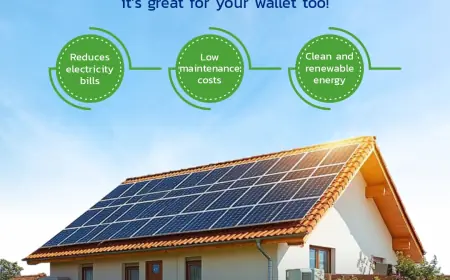Gas Insulated Transformer Market Dynamics and Future Growth Insights 2024 - 2032
The gas insulated transformer market is witnessing substantial growth due to the increasing need for efficient, compact, and reliable electrical power distribution systems. Gas-insulated transformers (GITs) are gaining popularity in various industries, especially in regions with space constraints and high demand for stable power supply. These transformers, which use SF6 gas as an insulating medium, offer superior performance, safety, and durability compared to traditional air-insulated transformers. The gas insulated transformer market is expected to continue expanding as industries seek innovative solutions to meet the growing global demand for electricity. This article will explore the key drivers, market trends, and the future prospects of the gas insulated transformer market.
Key Drivers of the Gas Insulated Transformer Market
The gas insulated transformer market is primarily driven by the growing need for power infrastructure, particularly in urban and densely populated areas. The compact nature of GITs makes them ideal for installation in spaces where traditional transformers may not be feasible. Furthermore, their ability to operate efficiently in harsh environments and reduce environmental impact are contributing to their rising adoption in various sectors.
Growing Demand for Reliable Power Distribution
As industries and populations grow, the need for reliable and uninterrupted power distribution systems is more crucial than ever. Gas insulated transformers are gaining prominence due to their ability to ensure a stable power supply while occupying less space compared to conventional transformers. They are particularly useful in substations, industrial plants, and areas with limited space, helping to enhance the overall efficiency of power transmission networks.
Urbanization and Space Constraints
The rapid urbanization in developing economies is creating significant demand for compact and reliable power distribution systems. As cities become more crowded and the space for infrastructure becomes limited, gas insulated transformers provide a space-saving solution. They are also more resistant to weather and environmental factors, making them suitable for use in urban settings where external conditions can vary dramatically.
Market Segmentation of the Gas Insulated Transformer Market
The gas insulated transformer market can be segmented based on voltage rating, end-user industry, and geography. These segments offer valuable insights into the market’s dynamics and the preferences of consumers in different regions.
Voltage Rating Segmentation
Gas insulated transformers are classified based on their voltage ratings, which include high voltage, medium voltage, and low voltage transformers. High voltage GITs are the most commonly used in the transmission of electricity over long distances, whereas medium and low voltage transformers are typically used for distribution in industrial and residential applications.
High Voltage Gas Insulated Transformers
High voltage gas insulated transformers are used primarily in power transmission systems, substations, and offshore wind farms. These transformers are designed to handle high voltage levels efficiently and provide stable performance in demanding environments. Their ability to operate safely under extreme conditions and their compact design make them ideal for use in remote or congested areas.
Medium and Low Voltage Gas Insulated Transformers
Medium and low voltage gas insulated transformers are used for distribution purposes, often in industrial facilities, commercial buildings, and residential complexes. These transformers play a crucial role in converting the high voltage electrical power from transmission networks into lower, usable levels for end consumers. Their compact size, low maintenance needs, and high efficiency are key factors driving their adoption in distribution networks.
End-User Industry Segmentation
Gas insulated transformers find applications across various industries, including utilities, industrial manufacturing, renewable energy, and infrastructure. Each sector has its unique requirements, which are addressed by the efficiency, safety, and reliability offered by GITs.
Utilities
The utilities sector remains the largest end-user of gas insulated transformers, as these transformers are essential for maintaining the stability of power grids and distribution networks. Utilities are increasingly investing in GITs to improve the reliability of electricity supply in urban and rural areas, especially as the demand for electricity continues to rise.
Renewable Energy
With the growing emphasis on renewable energy sources like solar and wind, gas insulated transformers are becoming increasingly important in supporting these energy systems. GITs are used in solar power plants, offshore wind farms, and other renewable energy infrastructure due to their compact design and ability to function efficiently in challenging environmental conditions.
Industrial Manufacturing
In industrial manufacturing, gas insulated transformers are used to ensure a reliable power supply for heavy machinery, production lines, and other critical equipment. The high efficiency and low maintenance requirements of GITs make them ideal for industrial applications where power outages can result in significant losses.
Regional Insights: Key Markets for Gas Insulated Transformers
The gas insulated transformer market is growing at varying rates across different regions, driven by infrastructure development, industrial growth, and the adoption of renewable energy technologies. Major markets include North America, Europe, Asia Pacific, and the Middle East.
Asia Pacific
Asia Pacific is the largest and fastest-growing market for gas insulated transformers, owing to rapid urbanization, industrialization, and the increasing need for reliable electricity distribution. Countries like China, India, and Japan are heavily investing in infrastructure to meet growing energy demands, which is driving the adoption of GITs. Moreover, the focus on renewable energy projects in this region is also contributing to the market’s expansion.
Europe
Europe is another significant market for gas insulated transformers, particularly in countries like Germany, France, and the United Kingdom. The region is focused on modernizing its electrical grid infrastructure, incorporating more renewable energy sources, and improving energy efficiency, all of which are boosting demand for gas insulated transformers.
North America
In North America, the United States and Canada are leading the market for gas insulated transformers. With a well-established power infrastructure and a growing emphasis on renewable energy integration, the demand for compact and efficient transformers is expected to increase. North America is also seeing a shift towards the adoption of gas insulated transformers in smart grids and energy storage systems.
Middle East and Africa
The Middle East and Africa (MEA) region is experiencing steady growth in the gas insulated transformer market, driven by the ongoing construction of infrastructure, industrialization, and renewable energy projects. Countries like Saudi Arabia, the UAE, and South Africa are investing in advanced power distribution systems, which are driving the demand for GITs.
Challenges Facing the Gas Insulated Transformer Market
Despite the growing adoption of gas insulated transformers, several challenges remain that could hinder market growth.
High Initial Investment
One of the primary challenges facing the gas insulated transformer market is the high upfront cost associated with purchasing and installing these systems. While they offer long-term cost savings due to their low maintenance and high efficiency, the initial investment can be a barrier for some industries, particularly in developing economies.
Environmental Concerns
Although gas insulated transformers offer several environmental benefits, including reduced space usage and increased efficiency, the use of SF6 gas as an insulating medium has raised environmental concerns. SF6 is a potent greenhouse gas, and there are increasing calls for alternatives that can reduce the carbon footprint of GITs.
Future Outlook of the Gas Insulated Transformer Market
The gas insulated transformer market is expected to continue its upward trajectory, driven by technological advancements, growing demand for reliable power systems, and the ongoing transition to renewable energy. The introduction of eco-friendly alternatives to SF6 gas, as well as innovations in transformer design, will play a key role in shaping the future of the market.
Innovations in SF6 Alternatives
Research into environmentally friendly alternatives to SF6, such as fluoronitrile-based gases, is expected to address environmental concerns and increase the adoption of gas insulated transformers. These innovations will allow the industry to continue progressing toward sustainability while maintaining the high performance and reliability of GITs.
Increasing Demand for Smart Grids and Renewable Energy Integration
The transition to smart grids and the growing integration of renewable energy sources will further drive the demand for gas insulated transformers. GITs are ideally suited for use in smart grids due to their compact design, efficiency, and ability to operate in various environments.
Conclusion
The gas insulated transformer market is poised for strong growth, driven by the increasing need for efficient, reliable, and compact power distribution solutions. With the expansion of renewable energy projects, the demand for smart grids, and ongoing urbanization, the market for GITs will continue to evolve. Innovations in transformer technology, as well as advancements in environmentally friendly insulating gases, will shape the future of this market and ensure its sustainability in the years to come.
What's Your Reaction?
 Like
0
Like
0
 Dislike
0
Dislike
0
 Love
0
Love
0
 Funny
0
Funny
0
 Angry
0
Angry
0
 Sad
0
Sad
0
 Wow
0
Wow
0



















































